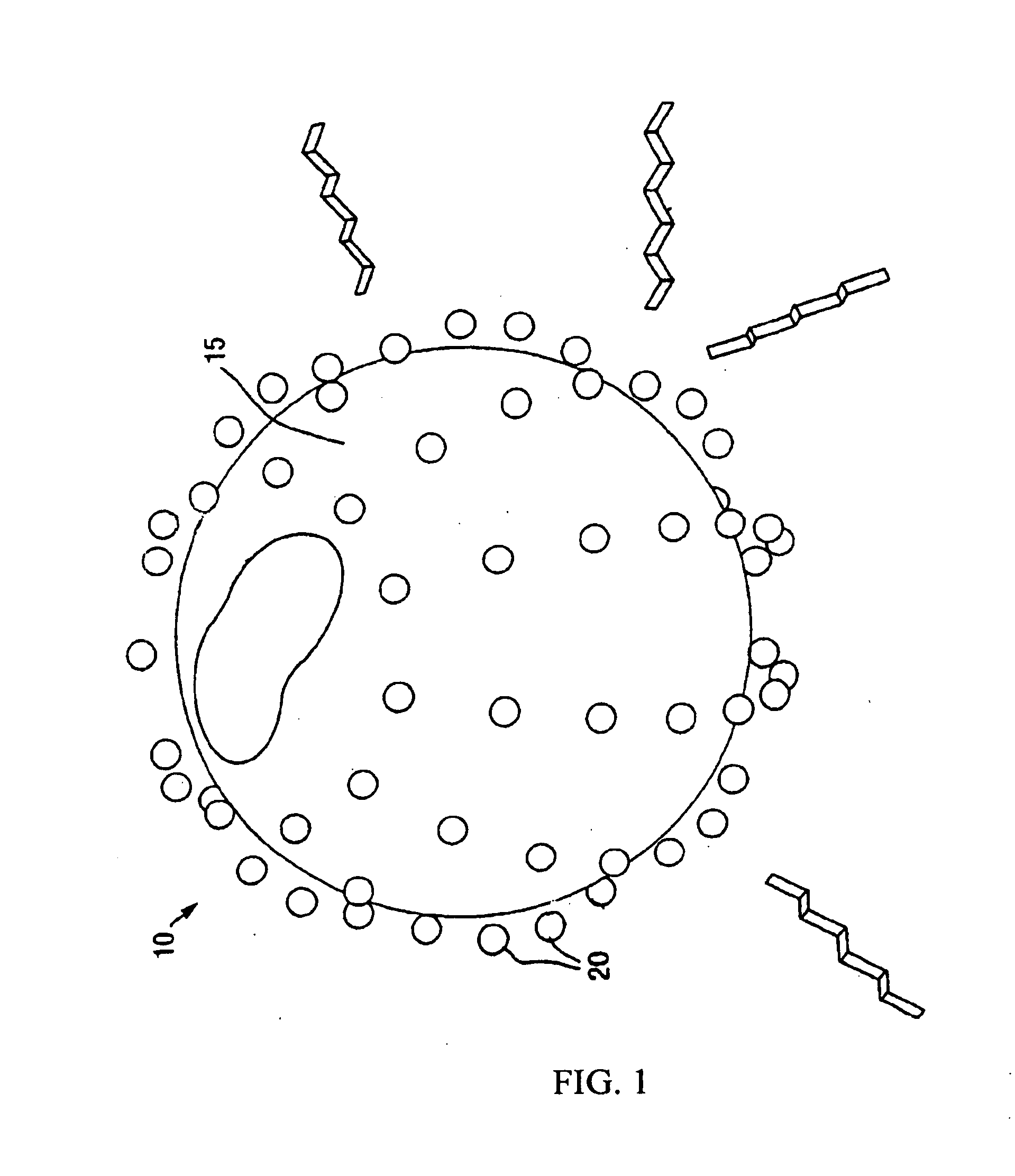Odor control cellulose-based granules
a technology of cellulose-based granules and odor control, which is applied in the direction of bandages, chemistry apparatus and processes, and other chemical processes, can solve the problems of low deodorizing ability, detracting from what the black color of charcoal is, and the deodorizing ability of activated charcoal
- Summary
- Abstract
- Description
- Claims
- Application Information
AI Technical Summary
Benefits of technology
Problems solved by technology
Method used
Image
Examples
Embodiment Construction
Section I—Description
[0013]The present invention relates to an odor-control delivery mechanism that can be employed independently by itself or as part of a product or article. The present invention builds upon previous advances and improves the use of a carrier vehicle for odor control applications. The delivery mechanism makes use of metal-modified nanoparticles, such as described in U.S. Patent Application Publication No. 2006 / 0008442, by MacDonald et al., the contents of which are incorporated herein by reference. “Nanoparticle” refers to a high surface material having a particle diameter of less than about 500 nanometers. The nanoparticles are combined with a substrate that has a physical form and texture of fine cellulose-based granules, such as described in International Patent Application No. WO 2006 / 048280, by Ozersky et al., which describes multi-functional surface-modified cellulose-containing fibers for use in making paper, tissue and cardboard products, and a process for...
PUM
| Property | Measurement | Unit |
|---|---|---|
| diameter | aaaaa | aaaaa |
| density | aaaaa | aaaaa |
| density | aaaaa | aaaaa |
Abstract
Description
Claims
Application Information
 Login to View More
Login to View More - R&D
- Intellectual Property
- Life Sciences
- Materials
- Tech Scout
- Unparalleled Data Quality
- Higher Quality Content
- 60% Fewer Hallucinations
Browse by: Latest US Patents, China's latest patents, Technical Efficacy Thesaurus, Application Domain, Technology Topic, Popular Technical Reports.
© 2025 PatSnap. All rights reserved.Legal|Privacy policy|Modern Slavery Act Transparency Statement|Sitemap|About US| Contact US: help@patsnap.com



